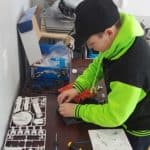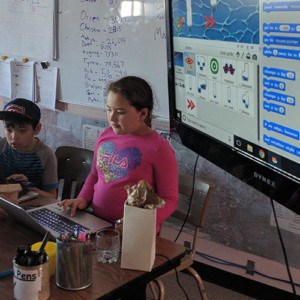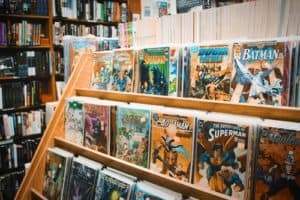Section Navigation
Introduction
Mi’kmaq Elder Albert Marshall coined the term Two-Eyed Seeing to describe “learning to see with one eye open to the strengths of Indigenous ways of knowing, and the other eye to the strengths of Western ways of knowing, and using both these eyes together for the benefit of all.”
Two-Eyed Seeing is a teaching that when applied to media, encourages youth to respect and honour their Indigenous culture while using technology. It is possible to incorporate culture and technology in a meaningful way that fosters a positive sense of identity for Indigenous youth.
Some examples of this are video games that incorporate language or traditional clothing, apps with traditional songs, and apps that use daily words in traditional languages.
Learning Goals
Students will learn about ‘Two-Eyed Seeing’ and consider how its teaching can be applied to their use of technology.
Vocabulary
Avatar - a graphic illustration that represents yourself or a character.
Backstory - the history or background of a character.
Teaching - a cultural, spiritual, traditional lesson.
Ways of Knowing - how we make sense of the world using an Indigenous lens, which applies a holistic approach to understanding how everything around us is interconnected.
Guiding Questions
- What are some examples of video games, apps, websites, musicians, etc. that use elements from an Indigenous culture?
- What are some ways of bridging culture and technology? Some possible answers include:
- Creating characters that Indigenous users can relate to and identify with.
- Incorporating traditional language and clothing into character and game design.
- Apps that use or teach traditional songs.
- Apps or games that use words in traditional languages.
- Videos or movies that include oral stories, histories, or other recordings from Elders.
- What are some benefits of bridging culture and technology? Some possible answers include:
- Validation and recognition; for instance when a player sees themselves reflected in an avatar or character.
- Building a sense of pride around culture and language.
- Empowering Indigenous youth.
- Educating users (both Indigenous and non-Indigenous) about aspects of Indigenous life, traditions, and culture.
- Opening users eyes and minds to the possibilities of seeing multiple perspectives at the same time.
Curriculum Links
In this module students learn how to bridge ways of knowing from Indigenous culture with technology, and how together they can be used to develop projects, apps, games, etc. that include traditional language, music, art, the land, food etc. And as such, the content can be linked to all subjects and curriculums, especially Heritage and Culture, but also Arts, Language Arts, Science and Technology, Social Studies, History, Geography, Civics and Economics, and others.
Materials
- Blank paper (one sheet per student)
- Markers, crayons, pencil crayons
- Pipe cleaners, googly eyes, popsicle sticks
- Glue (glue sticks, glue gun, liquid glue)
- Scissors
- Other craft materials (such as beads, leather, etc.)
Non-Computer Activity
- Play this TEDx Talk by Rebecca Thomas who describes Two-Eyed Seeing (Etuapmumk) and how to use “both eyes”. Her talk sets the tone for the discussion that follows.
- After the video, have the group sit in a circle and share traditions from their community or family. This could be teachings, traditional foods, songs, musical instruments, clothing, etc.
- Students then use paper and art supplies to create an avatar that incorporates cultural elements and a backstory.
- The backstory should include:
- character’s name,
- language spoken,
- community,
- hobbies/interests, as well as
- any talents, special abilities, superpowers, etc.
- Following this, students come back to the circle and share their creation with the group.
Computer Activity
Students then take their created avatar and move to the computer to create one of three things:
- A poster of their avatar, using illustration or design software (such as Sketch).
- A theme song for their avatar, using music-making software (such as Music Lab). Encourage students to incorporate influences from their community: language, songs, teachings, etc.
- A model of their avatar, using 3D printing (if available) or 3D rendering software (such as Blender).
Resources
Additional Resources
- Roblox is a free game that allows users to build their own video game and virtual reality.
- Minecraft ($26.95) is a game that allows users to build virtual worlds.
- Wapikoni Mobile creates short films directed and made by Indigenous youth.
Social Media Resources
- Strong Minded Inuit is a youth-led initiative that incorporates language and culture using rap to promote suicide awareness and prevention.
- Snotty Nose Rez Kids are an Indigenous hip-hop group from Haisla Nation that use music to tell stories, challenge stereotypes, and raise awareness.




